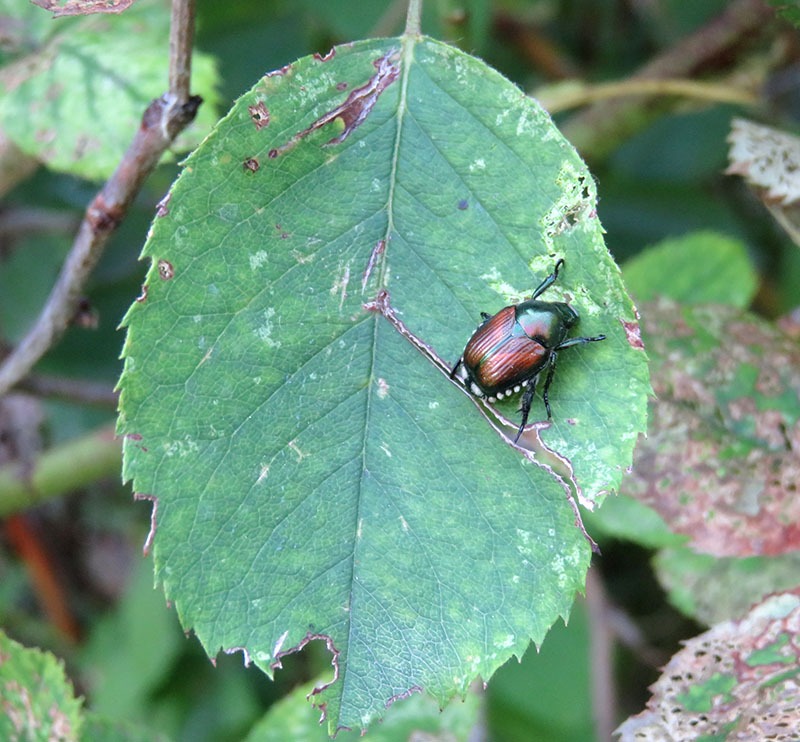
Japanese Beetles in Denver, Colorado

Invasive Pests In Colorado
We have an uninvited guest in Colorado that has traveled from the east coast. The Japanese beetle is an invasive pest that made its trek west from plant to plant and caught scientists and experts off guard by establishing itself in our region. It was thought it could never flourish in our region because the Japanese beetle is an insect that likes moisture and humidity. Urban landscape has become an oasis due to irrigated greenery and plants which allows this insect to thrive in our surrounding areas.
There have been localized infestations in central Denver, Englewood and Littleton. Pueblo and parts of Boulder and Jefferson Counties have reported beetle activity. The question to ask is will they find your landscape and call it home? Most likely, but it’s anyone’s guess when that will happen. In the meantime, become familiar with this enemy pest and be ready.
Description of This Invasive Pest
- The Japanese beetle is a scarab beetle, and is approximately one-half inch long with a metallic green body and copper-colored covers on its wings.
- Examination with a hand lens will reveal 12 tufts of white hairs bordering the margin of the wing covers.
- The larvae, or grubs, reside in the soil. They are about an inch long when fully grown and lie in a curled or “C” shaped position. Close examination of the grubs will reveal a V-shaped series of bristles on the tip of the abdomen.

How Do I Know if I Have a Japanese Beetle Problem?
- It is somewhat easy to spot their damage — lacy patterns or skeletonized foliage on leaf surfaces or devoured flowers or petals. They are mobile and can fly up to five miles. They feed in groups and signal their fellow beetle friends to come and join the free banquet. Japanese beetles start eating at the tops of plants and work downward. They are sun worshippers and feed the heaviest in temperatures between 85 and 95 degrees.
- The insect feeds on roots when in the grub stage, leaves and flowers of many ornamental and agricultural plants. They are attracted to well-irrigated lawns, as beetle numbers grow, home landscapes can have high grub numbers, which means dead lawn areas. Remember they’re attracted to over 300 plant species.
Our Solutions Can Help Your Problem
The reality is there is no quick fix. Management of Japanese beetle is complicated because adults and grubs (larvae) are very different from one another. So there is a variety of integrated pest management approaches combining multiple management tools to be effective. Control of just one life stage will not necessarily guarantee control of the other.
The goal is to keep this pest from spreading to non-infested areas in the state. The adult Japanese beetle is a voracious feeder and will cause significant damage to plant species, including landscapes and some of our native plants as well. Integrated control strategies are encouraged.
At Schulhoff we have multiple tactics that ensure the safety of our bee population. We take bees seriously and do everything possible to protect the species. This is why we use a special control program that can help remove the infestation without harming the bees. This is one of several critical points to consider when managing the control treatment of the Japanese beetle.
When you call Schulhoff, our inspectors visit your property to identify any Japanese beetle damage. Our trained and experienced employees can identify an infestation of the beetle on your property.
We can help you! Call (303) 279-1910 to schedule your inspection today.

